The vast variety of laundry detergents and fabric softeners in today’s marketplace are as expansive and diverse as consumer needs and expectations. Adding fabric softener is a fundamental aspect of doing the laundry, but with the proliferation of all the products available today, it is easy to get lost in the sea of available choices.
In the words of Arnold Zlotnik, President and CEO of Alpha Aromatics, “Scent surrounds everything, and when it is on our clothing, the fragrance follows us throughout the course of the day. This can affect our moods and feelings even if we are not aware of it. Our fragrance creators at Alpha Aromatics masterfully play upon the fact that buying a detergent or softener is even more determined by smelling as it is by the functional characteristics it may offer.”
What Exactly Is A Fabric Softener?
A fabric softener is a liquid formulation that is added to washing machines during the rinse cycle to make clothes pleasantly tactile. It works by depositing lubricating chemicals on the fabric that alters its texture so that it feels softer, smells fresher and contains less static cling. There are basically three forms: liquid softener, dryer sheets and dryer balls.
Liquid softeners tend to be more costly, but they are usually effective when it comes to leaving clothing softer with less static. Softener sheets are more affordable and easy to use, but they are not as effective as liquid varieties. Dryer balls offer the added advantage of being reusable and thereby eco friendly. They too are inexpensive.
How Do Emulsifiers Ensure The Quality Of Fabric Softeners?
Fabric softeners are conditioners that do what they say; namely, soften fabric and prevent static cling, which is caused by a buildup of static electricity. The nature of the conditioning ingredients used in fabric softeners are not usually soluble in water, which deems it necessary to add another type of chemical to its composition to maintain its stability.
Without these emulsifiers, the softener liquid would separate into two distinct phases, rendering them ineffective. Emulsion stabilizers and preservatives ensure the quality of the product.
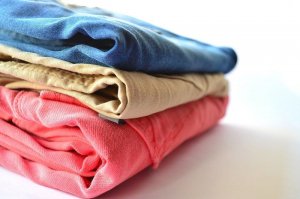
Micro-emulsions, macro-emulsions, and emulsion polymers are the three types of chemicals used in fabric softener formulations. Macro-emulsions are creamy distributors of oil and water, such as that found in hand lotions or hair conditioners. They scatter light effectively and appear milky due the fact that their droplets are greater than a wave length of light. The emulsifier molecules surround droplets, permitting their diffusion into water.
In the case of a micro-emulsion, the chemical process is similar, but the particles are so small that light passes around them, which renders them clear and transparent instead of milky white.
One advantage of micro-emulsion is that unlike macro-emulsions that only deposit on the fiber’s surface, the micro silicone particles actually penetrate into fibers because they are so tiny. Emulsion polymers (large molecules composed of many repeated subunits) create a balanced mesh of particles that suspend the tiny silicone droplets like food strained in a colander.
A Little History of The Fabric Softener Market
The early twentieth century witnessed the birth of the first fabric softeners. Developed by the burgeoning textile industry that was using a process to dye cotton fibers that was harsh against the skin, the new products were known as cotton softeners, and they were created from seven parts water, three parts soap and one part olive, corn or tallow oil. With the passage of time and advances in organic chemistry, new and better compounds were invented that softened fabrics more effectively and eventually they found their way to the commercial market place.
In the 1960s, Proctor and Gamble among other companies was selling liquid fabric softener formulations exclusively for home use. Within the next ten years, these softeners became so popular that manufacturers were constantly at work seeking still softer products with even more appealing fragrances such as those created by our master perfumers.
There was, however, one persistent problem that was associated with the use of liquid softeners at this time. The chemicals used for the softeners did not blend well with detergents and could only be added after all the detergent had been removed in the rinse cycle, which meant that an inconvenient additional trip to the washing machine was necessary if the user wanted to soften clothes.

This was corrected in the late 1970s with the advent of the dryer sheet format. These were added to the dryer instead, and even though they are still very popular today, liquid softeners are still preferred because they are more effective.
In the 1990s, concern for the environment was fast becoming an issue of public concern, and manufacturers began experimenting with ultra concentrated formulations, which were designed in smaller packages and promised that much less of the product needed to be used. Their perceived value was highly questionable due to the fact that the price was higher even though the containers were smaller.
Newer Fabric Softener Materials And Formulations
Polydimethylsiloxane (more easily known as (PDMS) is one of the more recent groups of materials that are commonly utilized in modern fabric softener formulations. These polymeric compounds belong to the silicone family and they are particularly known for their unusual flow properties. They contain a fluid known as siloxane, which lubricates fibers and thereby softens them, making them much easier to iron.
Other silicone derivatives substantially enhance the “feel” of fabric. Quaternary ammonium compounds aka QUATS, are strong chemicals that disinfect and kill germs.
As such, they are often an ingredient in disinfectant wipes, sprays and household cleaners. They do effectively soften fabrics, but at the same time they can render them less absorbent, which is particularly problematic for towels and diapers. To compensate, QUATS are used in conjunction with other effective ingredients that do not interfere with water absorption.
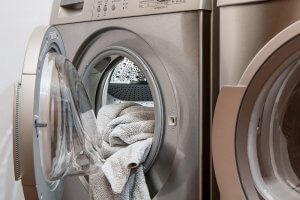
Some Relevant Global Statistics
The global fabric softener and conditioner market was valued at $17,545 million in 2018 and is projected to reach $23,529 million by 2025, registering a compound annual growth rate (CAGR) of 4.3% from 2018 to 2025. Constant evolvement of the fabric softener industry is projected due to the increase in the demand for clothing coupled with alterations in consumer demands regarding fabric care products.
An estimated $400 million worth of dryer sheets are sold each year. The major manufacturers such as Procter and Gamble (Downy) and Lever Brothers (Snuggle), dominate about 90% of the market share while private label brands account for the remaining 10%.
Consumer Expectations For Laundry Products
Our researchers, product developers and chemists strive to create fabric softener fragrances that meet the marketing demands of today’s sophisticated consumers. Our compositions are based on both technical evaluations and consumer testing.
Formulas must provide highly desired qualities such as: softness, easy iron glide, less wrinkle formation during the wash cycle and improved wrinkle removal after washing, better color retention and improved stain protection. All this must come into play and formulas must also be safe, environmentally friendly, cost-effective and fragrantly pleasing.
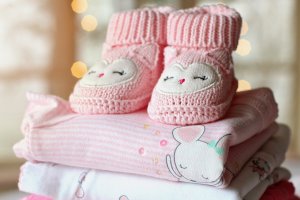
As chemists develop newer and more effective ingredients, there is potential for additional consumer-perceivable benefits. Consumer preferences and selection
towards a cleaning product are influenced by a number of factors which include: individual moral values, ideological characteristics, philanthropic inclinations and a sense of community commitment.
They are prone to change depending on current purchasing trends, which today include brand value and integrity. Research has indicated that the burgeoning clamor for sustainable laundry and dishwashing products is developing rapidly due to both an increase in per capita income and in the number of sophisticated consumers.
Alpha Aromatics and Fabric Softener Manufacturers
Our routes as fine perfume manufacturer stretch back to the 1940s, and our decades of hands on experience can be seen and smelled throughout an endless array of industries, as fragrance is becoming more and more vital to the sale of consumer products in most industrial sectors.
The following list and subsequent descriptions represent a few fragrances created by our teams that marry perfectly with liquid and dry fabric softener products.
What Are 5 Popular Fabric Softener Fragrances?
1) Litsea And Orange Blossom
2) Passionfruit Hibiscus
3) Pink Peony Mangosteen
4) Guavaberry Lotus
5) Starfruit Honeysuckle
Litsea And Orange Blossom
A top note of floral, spicy and refreshing bergamot, tart and tangy grapefruit and crisp, citrusy Litsea Cubeba initiates this complex and pleasing scent. These aspects quickly fade into a heart note of spicy, bright carnation, deeply intoxicating jasmine and fresh, sweet orange blossom. The scent completes with a base note comprised of sensual musk and balsamic and woody cedar.
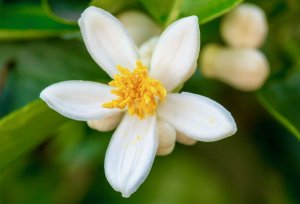
Passionfruit Hibiscus
This fragrance opens with a burst of fresh, fruity guava combined with soft, sweet, kiwi and tropical, fruity, ripe and juicy passionfruit. This pleasant melange soon gives way to a heart note with elements of clear, floral and green waterlily, light, somewhat musky hibiscus, sweet, rich jasmine and intoxicating, creamy gardenia. A base note of sensual musk, warm, earthy, amber and cozy, woody sandalwood finish this exotic fragrance.
Pink Peony Mangosteen
This highly fragrant and tropical scent is hallmarked by a top note of sweet and tangy mangosteen, fruity, fresh and green pear and honey-like tangerine. These redolent elements soon fall away to a middle note comprised of floral, earthy hyacinth, rosy, milky, almondy and green lilac and strong, sweet peony. Enticing vanilla, dark, musky and earthy patchouli and animalistic, sensual musk form the base note of this alluring fragrance.
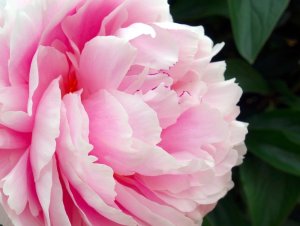
Guavaberry Lotus
Vine ripened, tangy and woody-nuanced raspberry, fresh guava, and sulfuric, fruity black currant form the top notes of this pleasing scent. These soon surrender to a middle note containing haunting lotus blossom, refreshing, floral and woody freesia, and musty, green cyclamen.
An oriental base note of passionate musk, elegant vanilla, spicy and inviting tonka bean with its tinges of cinnamon, bittersweet, saffron, succulent almond and sweet cloves and creamy, woody sandalwood comprise the final bouquet of this unforgettable fragrance.
Starfruit Honeysuckle
This pleasing fragrance begins with a top note of green, apple and tropical papaya, juicy, succulent clementine, sweet, banana plantain and tart, sour starfruit. These elements fade into a passionate heart note of soft, peachy, and creamy plumeria, exotic jasmine, sweet powdery, woody and-floral violet, raspberry, fruity iris and wild and sweet honeysuckle. Enticing vanilla, slightly sweet and earthy nectar and sensual musk complete this scent.
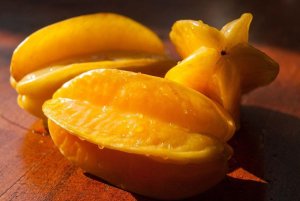
In Conclusion
The delicate art of fragrance creation for personal care and laundry products such as fabric softeners demands a level of expertise that only decades of experience can accomplish. Alpha Aromatics and our formidable history of fine perfume formulations has helped to transform the mundane task of doing the laundry into into a fragrant sensory experience for brands the world over.
So call our team today and see what we can do for your company’s line of laundry products.
Photo Credits: Pixabay
 alpha aromatics®
alpha aromatics®